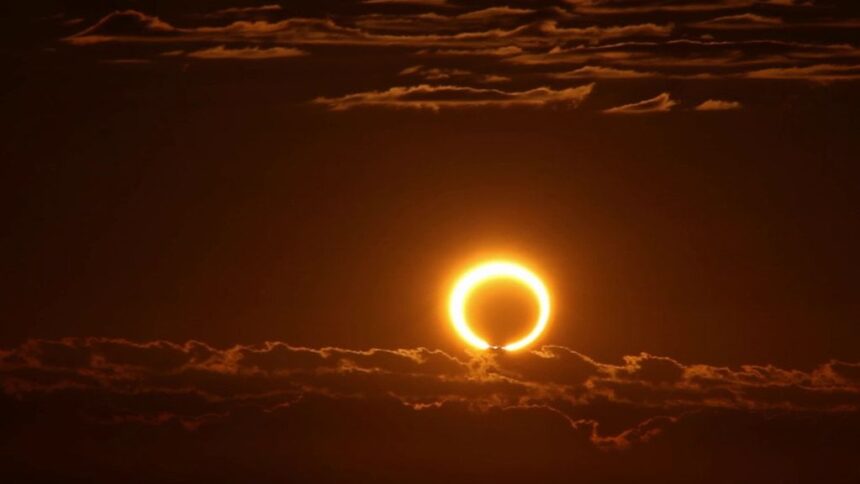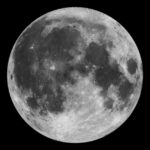Today, an extraordinary celestial event will captivate skywatchers around the world. An annular solar eclipse will transform the sun into a spectacular “ring of fire.” This unusual phenomena happens when the moon passes between the Earth and the sun but is too distant from Earth to totally hide the sun. As a result, the moon’s black silhouette is surrounded by a brilliant ring of sunshine.
What is an Annular Solar Eclipse?
An annular solar eclipse happens when the moon is at its farthest point from Earth, known as apogee. Because the moon appears smaller, it does not entirely block the sun. Instead, it leaves a ring of the sun’s outer edges visible, creating a “ring of fire” effect. This differs from a total solar eclipse, where the moon completely covers the sun, casting a shadow over Earth.
When and Where to Watch
The annular solar eclipse will be visible in parts of South America, the Pacific Ocean, the Atlantic Ocean, and Antarctica. The eclipse will begin at 12:50 p.m. EDT (1650 GMT) and reach its maximum at 3:03 p.m. EDT (1903 GMT). The best places to view the “ring of fire” include Easter Island, Chile, and Argentina.
Safety First: How to Watch Safely
Watching an annular solar eclipse requires proper eye protection. Without solar viewers or specialised eclipse glasses, never stare directly at the sun. When watching the eclipse, regular sunglasses are not safe to use.. You can also use a pinhole projector to watch the eclipse indirectly.
During an annular solar eclipse, the moon’s shadow has two parts: the umbra and the penumbra. The darkest and most central area of the shadow, when the sun is totally obscured, is called the umbra. The outer region of the shadow where the sun is only partially obscured is known as the penumbra. In an annular eclipse, the moon’s shadow falls short of reaching Earth, creating the “ring of fire” effect.
Why is it Called a “Ring of Fire”?
The term “ring of fire” comes from the bright ring of sunlight that appears around the moon during the eclipse. This happens because the moon is too far away to cover the entire sun. The edges of the sun remain visible, forming a glowing ring. This stunning visual effect is what makes annular solar eclipses so special.
Eclipses have fascinated humans for centuries. They were frequently interpreted by ancient societies as signs or messages from the gods. Today, we understand the science behind them, but they still inspire awe and wonder. The annular solar eclipse is a reminder of the incredible dynamics of our solar system.
Fun Facts About Solar Eclipses
- Eclipse Chasers: A small number of people embark on global journeys to observe solar eclipses. We call them eclipse chasers.
- Predictable Events: Solar eclipses can be predicted years in advance thanks to our understanding of the moon’s orbit.
- Different Types: There are three types of solar eclipses: total, partial, and annular. Each offers a unique viewing experience.
How to Capture the Moment
If you’re planning to photograph the annular solar eclipse, use a solar filter on your camera to protect the lens and your eyes. A tripod can help keep your camera steady. Experiment with different settings to capture the best shot of the “ring of fire.”
What if You Miss It?
Don’t worry if you miss today’s annular solar eclipse. There will be more opportunities to witness this phenomenon in the future. The date of the next annular solar eclipse is February 17, 2026.
Editor’s Recommendations
- A Star-Studded Rosette Nebula Lights Up the Night Sky
- Shocking Discovery on Pluto’s Moon Charon: Carbon Dioxide and Hydrogen Peroxide Found
- Annular Solar Eclipse on Oct. 2, Witness the Sky’s Fiery Ring at Breakneck Speed
- Once-in-a-Lifetime Event: Corona Borealis Constellation Shine Brighter as Nova Explosion





